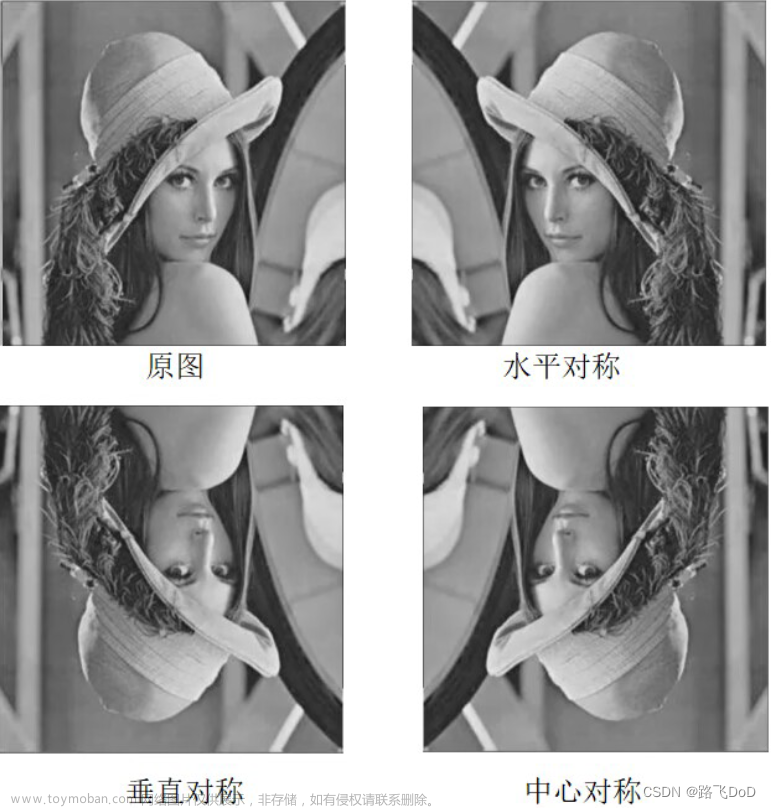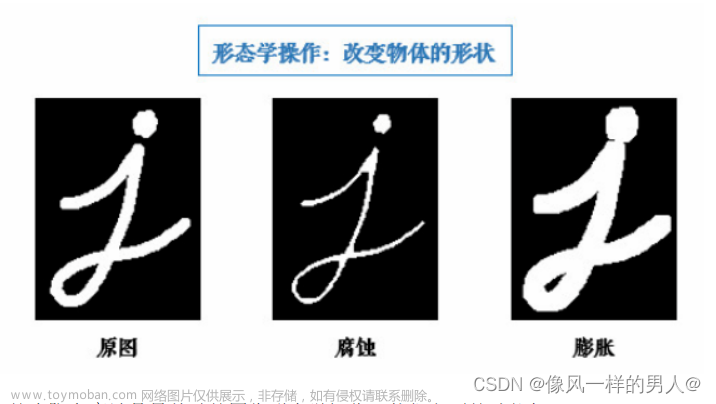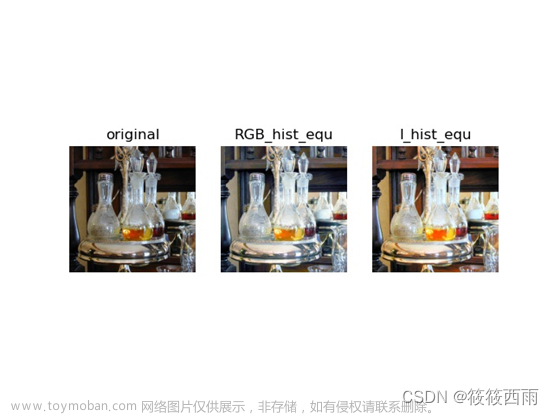Gaussian Noise: Gaussian Noise | Hasty.ai
from matplotlib import pyplot
from PIL import Image
import numpy as np
url=r"C:\Users\jimore\Pictures\girl.jpeg"
img=np.random.rand(100,100)
# img=np.array(Image.open(url))
print(img)
pyplot.figure(1)
pyplot.imshow(img)
Gaussian_noise=np.random.normal(22,10,img.shape)
print(Gaussian_noise)
noisy_img=img+Gaussian_noise
print(noisy_img)
pyplot.figure(2)
pyplot.imshow(noisy_img)
clean_img=noisy_img-Gaussian_noise
pyplot.figure(3)
pyplot.imshow(clean_img)
pyplot.show()
Rayleigh Noise: How To Make Rayleigh Noise On Image - C# Guide - Epoch Abuse
from matplotlib import pyplot
from PIL import Image
import numpy as np
url=r"C:\Users\jimore\Pictures\girl.jpeg"
import numpy as np
def generate_rayleigh_noise(amplitude, size):
"""
生成瑞利噪声
参数:
- amplitude: 瑞利噪声的振幅(决定了噪声强度)
- size: 生成噪声的大小(即生成数组的形状)
返回值:
- rayleigh_noise: 生成的瑞利噪声数组
"""
# 生成高斯分布的随机数
gaussian_noise = np.random.randn(*size)
# 计算瑞利噪声
rayleigh_noise = amplitude * np.sqrt(2 * (gaussian_noise**2))
return rayleigh_noise
# 设置参数
amplitude = 0.1 # 振幅
url=r"C:\Users\jimore\Pictures\girl.jpeg"
img=np.array(Image.open(url))/255
pyplot.figure(1)
pyplot.imshow(img)
# 生成瑞利噪声
noise = generate_rayleigh_noise(amplitude, img.shape)
# 打印噪声数组
print(noise)
print(noise.shape)
pyplot.figure(2)
pyplot.imshow(noise)
noisy_img=img+noise
pyplot.figure(3)
pyplot.imshow(noisy_img)
pyplot.show()
Salt-and-Pepper Noise: Add a "salt and pepper" noise to an image with Python - GeeksforGeeks
import random
import cv2
from matplotlib import pyplot
def add_noise(img):
# Getting the dimensions of the image
row, col = img.shape
# Randomly pick some pixels in the
# image for coloring them white
# Pick a random number between 300 and 10000
number_of_pixels = random.randint(300, 10000)
for i in range(number_of_pixels):
# Pick a random y coordinate
y_coord = random.randint(0, row - 1)
# Pick a random x coordinate
x_coord = random.randint(0, col - 1)
# Color that pixel to white
img[y_coord][x_coord] = 255
# Randomly pick some pixels in
# the image for coloring them black
# Pick a random number between 300 and 10000
number_of_pixels = random.randint(300, 10000)
for i in range(number_of_pixels):
# Pick a random y coordinate
y_coord = random.randint(0, row - 1)
# Pick a random x coordinate
x_coord = random.randint(0, col - 1)
# Color that pixel to black
img[y_coord][x_coord] = 0
return img
# salt-and-pepper noise can
# be applied only to grayscale images
# Reading the color image in grayscale image
img = cv2.imread(r"C:\Users\jimore\Pictures\girl.jpeg",cv2.IMREAD_GRAYSCALE)
pyplot.figure(1)
pyplot.imshow(img)
salt_and_pepper_img=add_noise(img)
# Showing the image
pyplot.figure(2)
pyplot.imshow(salt_and_pepper_img)
pyplot.show()
Gamma Noise: How To Make Gamma Noise On Images - C# Guide - Epoch Abuse
import cv2
import numpy as np
def generate_gamma_noise(shape, alpha, beta):
"""
生成Gamma噪声
参数:
shape:噪声数组的形状
alpha:Gamma分布的形状参数
beta:Gamma分布的尺度参数
返回值:
gamma_noise:生成的Gamma噪声数组
"""
gamma_noise = np.random.gamma(alpha, beta, shape)
return gamma_noise
def add_gamma_noise_to_image(image, alpha, beta):
"""
将Gamma噪声添加到图像
参数:
image:输入的图像数组
alpha:Gamma分布的形状参数
beta:Gamma分布的尺度参数
返回值:
noisy_image:添加Gamma噪声后的图像数组
"""
noise = generate_gamma_noise(image.shape, alpha, beta)
noisy_image = np.clip(image + noise, 0, 255).astype(np.uint8)
return noisy_image
# 读取图像
image = cv2.imread(r"C:\Users\jimore\Pictures\girl.jpeg", cv2.IMREAD_COLOR)
# 转换为浮点数类型,并将像素值缩放到[0, 1]范围
image = image.astype(np.float32) / 255.0
# 添加Gamma噪声
alpha = 1.0 # Gamma分布的形状参数
beta = 1.0 # Gamma分布的尺度参数
noisy_image = add_gamma_noise_to_image(image, alpha, beta)
# 将图像还原为整数类型(0-255范围)
noisy_image = (noisy_image * 255).astype(np.uint8)
# 显示原始图像和添加噪声后的图像
cv2.imshow('Original Image', image)
cv2.imshow('Noisy Image', noisy_image)
cv2.waitKey(0)
cv2.destroyAllWindows()
Exponential Noise: How To Make Exponential Noise On Image - C# Guide - Epoch Abuse文章来源:https://www.toymoban.com/news/detail-546944.html
from matplotlib import pyplot as plt
import cv2
import numpy as np
# # 9.4:指数噪声 (Exponential noise)
img = cv2.imread(r"C:\Users\jimore\Pictures\girl.jpeg", 0) # flags=0 读取为灰度图像
# img = np.ones([256, 256]) * 128
a = 50.0
noiseExponent = np.random.exponential(scale=a, size=img.shape)
imgExponentNoise = img + noiseExponent
imgExponentNoise = np.uint8(cv2.normalize(imgExponentNoise, None, 0, 255, cv2.NORM_MINMAX)) # 归一化为 [0,255]
plt.figure(figsize=(9, 3))
plt.subplot(131), plt.title("Origin"), plt.axis('off')
plt.imshow(img, 'gray', vmin=0, vmax=255)
plt.subplot(132), plt.title("Exponential noise"), plt.axis('off')
plt.imshow(imgExponentNoise, 'gray')
plt.subplot(133), plt.title("Gray hist")
histNP, bins = np.histogram(imgExponentNoise.flatten(), bins=255, range=[0, 255], density=True)
plt.bar(bins[:-1], histNP[:])
plt.tight_layout()
plt.show()
Uniform Noise: How To Make Uniform Noise On Images - C# Guide - Epoch Abuse文章来源地址https://www.toymoban.com/news/detail-546944.html
from matplotlib import pyplot as plt
import cv2
import numpy as np
# # 9.4:指数噪声 (Exponential noise)
img = cv2.imread(r"C:\Users\jimore\Pictures\girl.jpeg", 0) # flags=0 读取为灰度图像
# img = np.ones([256, 256]) * 128
mean, sigma = 10, 100
a = 2 * mean - np.sqrt(12 * sigma) # a = -14.64
b = 2 * mean + np.sqrt(12 * sigma) # b = 54.64
noiseUniform = np.random.uniform(a, b, img.shape)
imgUniformNoise = img + noiseUniform
imgUniformNoise = np.uint8(cv2.normalize(imgUniformNoise, None, 0, 255, cv2.NORM_MINMAX)) # 归一化为 [0,255]
plt.figure(figsize=(9, 3))
plt.subplot(131), plt.title("Origin"), plt.axis('off')
plt.imshow(img, 'gray', vmin=0, vmax=255)
plt.subplot(132), plt.title("Uniform noise"), plt.axis('off')
plt.imshow(imgUniformNoise, 'gray')
plt.subplot(133), plt.title("Gray hist")
histNP, bins = np.histogram(imgUniformNoise.flatten(), bins=255, range=[0, 255], density=True)
plt.bar(bins[:-1], histNP[:])
plt.tight_layout()
plt.show()
到了这里,关于PDF (Probability Density Function) Noise的文章就介绍完了。如果您还想了解更多内容,请在右上角搜索TOY模板网以前的文章或继续浏览下面的相关文章,希望大家以后多多支持TOY模板网!













